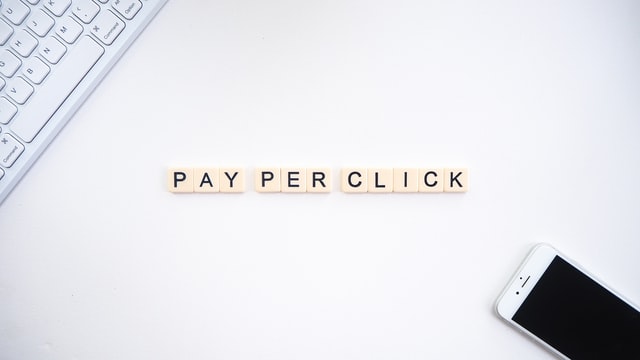“That’s why it’s always important to screen the prospective PPC agency before you buy into it or sign a contract with the company. You don’t want to pay for fake clicks but only for the genuine ones.” ― PPC Agency. 45% of the small businesses across the world invest in PPC advertising, and the count is increasing with every passing day. But without a proper PPC Campaign strategy investing is insubstantial as any investment demands an obvious return.
Creating a successful PPC campaign strategy involves thorough research, keyword selection, and compelling ad copy, and partnering with a white label PPC company can provide the expertise needed to execute these steps effectively. Their guidance can help you develop a well-structured and data-driven strategy that maximizes ROI and achieves your campaign goals.
Without a strategy, once can never win the game of PPC. Again you want quick audience reach and return too! Then where will you start from? This article will help you with how to develop a cracking strategy for your business and incur higher sales volume.
Before you prepare your PPC strategy, three major points you need to count- your strategy needs to be creative, competitive, and calculative. There are a lots of things you need to envelop within one strategy, and sadly it is time-bound as well.
Determining the target audience differs from product-to-product. On the same line with segregation and budget, you should do the allocation as per your niche.
Unable to stop extra expenses from your paid ads? We suggest you join a comprehensive digital marketing course in delhi to fix the loopholes in your campaign.
Let’s take a quick look at below five steps to follow in developing a PPC strategy-
Step 1: What is your Objective?
To make your campaign well-accepted by your target audience, you should fix a goal erstwhile. Recognizing your goal is the basic foundation of any PPC campaign strategy. Google Ads and social media business platforms offer you multiple PPC targeting alternatives. Recognizing your objective will make you choose the right one of them sufficing your marketing needs.
These are popular PPC goals –
- Boost your website traffic
- Lead generation
- Increase sales
- Spread brand awareness
Social media promotions are well suited for raising brand awareness. If your objective is to drive sales, then you should go for PPC and lead generation there is no substitute for Facebook ads. So, prioritize your objective and go with the platform that would return the best for your investment.
Step 2: Define the Target Audience
This is where you have to be genuinely attentive. It’s the audience who will give the final verdict about your product worth investing or not. Here we have given a brief synopsis on how you target your audience through social media and Google Ads.
Audience Targeting through Google Ads
While running a Google Ads campaign, you should emphasize on your intent keyword rather than the popular keywords used for product search. This is the key trick to escort your customers towards your sales funnel.
There are three main search categories of your intended keywords
- Transactional – What customers are looking for to purchase.
- Informational – What information customers are broadly searching.
- Navigational – If customers are searching for any particular website or resource.
The type of business and its strategy determine the keyword search for PPC. For instance-
- An e-commerce site should focus on transactional keywords to trigger conversion. Here are some actionable tips on Google Shopping Ads for your e-commerce business.
- Information offering would be the core dominance of service providing websites.
- To make the user experience enhanced App/SaaS, developing companies should target Gmail, Display network, and YouTube.
Apart from search, businesses target their audience with other methods like- Gmail, YouTube, and Display Ads. For that, you should know your audience type-
- Affinity Audiences – You must have been TV campaigns online. This is how marketers target a vast audience using URLs, intended keyword phrases, and places.
- In-market audiences – In-market audiences are those who are searching for a product as you have. These people are easy to convert.
- Life events – Reach people through Gmail and YouTube with personal events like- marriage, retirement, acknowledgment ceremony, and much more.
- Custom intent audiences – To make a custom-intent audience based on URLs and keywords you have to ransack the web for your groundwork. While using Google Ads, you can adopt machine learning to fasten this task for you.
- Remarketing – Let’s put it like this way- ‘Retargeting’. People who have their footfalls on your website target them using this method.
Defining the target audience at different points will fine-tune your sales funnel and cut short the ad spend sizably just like- targeting top-funnel audiences with display ads can improve your search visibility.
Social media paid ads
Moving on to the social media paid ads, we can say that targeting your audience much easier and on point. Depending on user behavior, you can easily track and build your target audience here.
On Facebook you can target your old leads as a custom audience, people who are more likely to visit your page is what we call as lookalike audience, and those who you target on the parameters of age, sex, location, interest, etc. fall under your custom audience.
For LinkedIn, you can use a similar strategy of Facebook, but here your key focus would be on professional aspects of individuals.
For better audience interaction through social media platforms, we would suggest you connect with your website landing page for better conversion.
Step 3: Optimizing Landing Pages
Using too many keywords for optimizing landing pages can cause a mess. Directing the audience to a generic product landing page can bite your budget as well. Another thing here matters the most is the user behavior of visitors on your website. If your page doesn’t contain relevant product information and solution offering it can result in a lower quality score of the website as well, which is a thread to a PPC campaign.
Make sure that as a PPC manager, you maintain a steady link between the ad campaign and your landing page. Things should go hand in hand to accelerate your conversion. Therefore a landing page should be rich with luring content and relevant keywords.
Step 4: Now Create an Ad
Since you are ready with your ad content and a relevant landing page start optimizing your ad campaign.
If your ad has been designed based on audience interest and the landing page essays the same, your page is ready to convert you. Now a few things here to add value are copywriting, visual experience, extensions, and other nitty-gritty of ad optimizing.
Lately, Google Ads has started offering automation for ad creation and optimization. To reap the fullest advantage of your campaign, you would go on adding varieties with headlines, body copy, and call-to-action for better circulation. Learn more about important PPC trends you can’t ignore in 2020.
Step 5: Evaluate and Optimize PPC Campaign Strategy
Right choice of paid ad mediums and tools set the pact of a PPC campaign. Thus, you have to be focused while deciding those metrics for easy targeting and better conversion.
Below are the key metrics for different paid ad types (based on your campaign goals)
- Click-through rate (CTR) – It decides the significance of your content as per audience targeting with a relevant keyword on display and social media ads.
- Cost per click (CPC) – The upper budget cap to lure an individual of your target audience is to as CPC.
- Cost per acquisition (CPA) – Competitiveness of the chosen keyword is the key focus of this metric.
- Conversion rate – The lower your conversion rate is, the higher your performing keywords will be.
- Quality score (Google Ads) – It refers to a combination efficacy of multiple metrics like ad significance, the relevance of the landing page, and CTR.
- Return on ad spend – This is the reason why you are running your ad campaign. With an apt strategy and control on spending, you can steer your financial growth.
You can use data science to optimizing your brand campaigns. Mastering the keyword research and audience segregation are boons to your PPC campaign strategy. Also, focus on your bid optimization strategy for higher profit generation.
Lastly, on a concluding note, we must say there are advanced tactics too for funnel infiltration. Learning a comprehensive digital marketing course can help you gain an in-depth knowledge of PPC strategizing along with practical exposure. These days most of the PPC platforms use Ai technologies for advanced targeting and optimization what, you should be in sync with these updates to grab the maximum of it.




